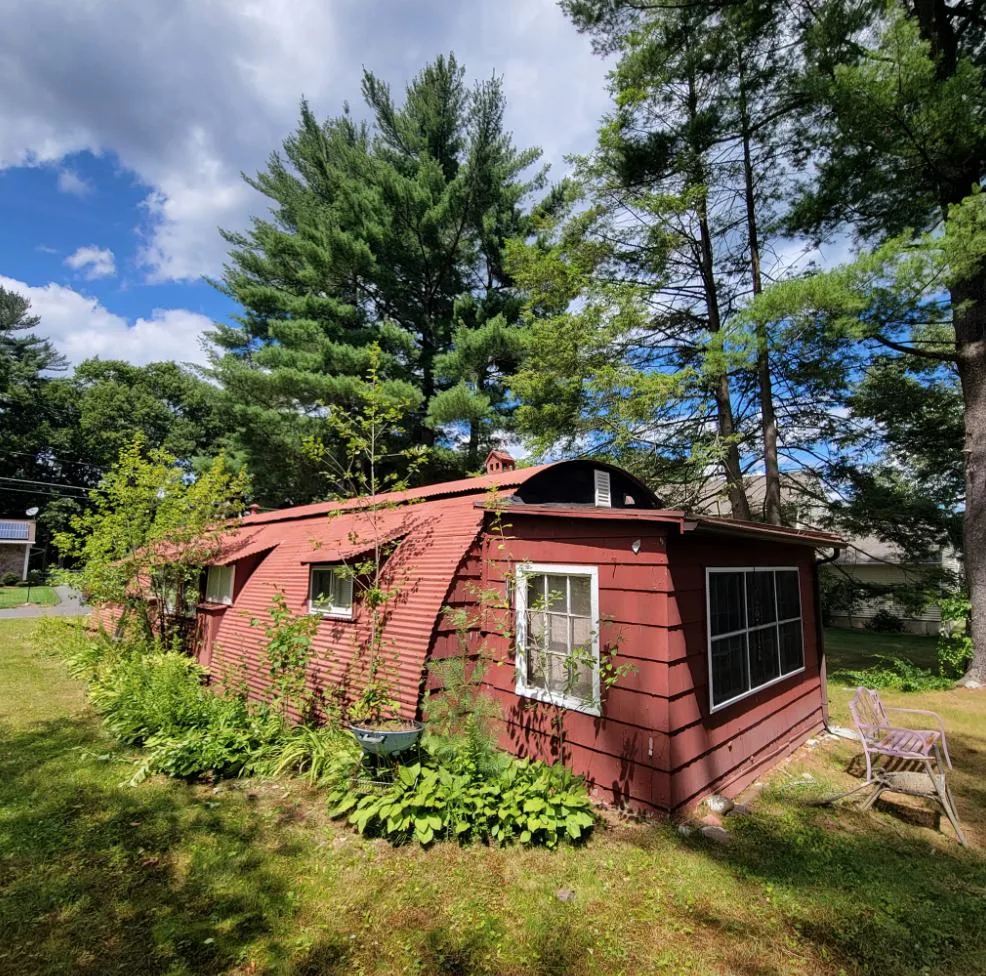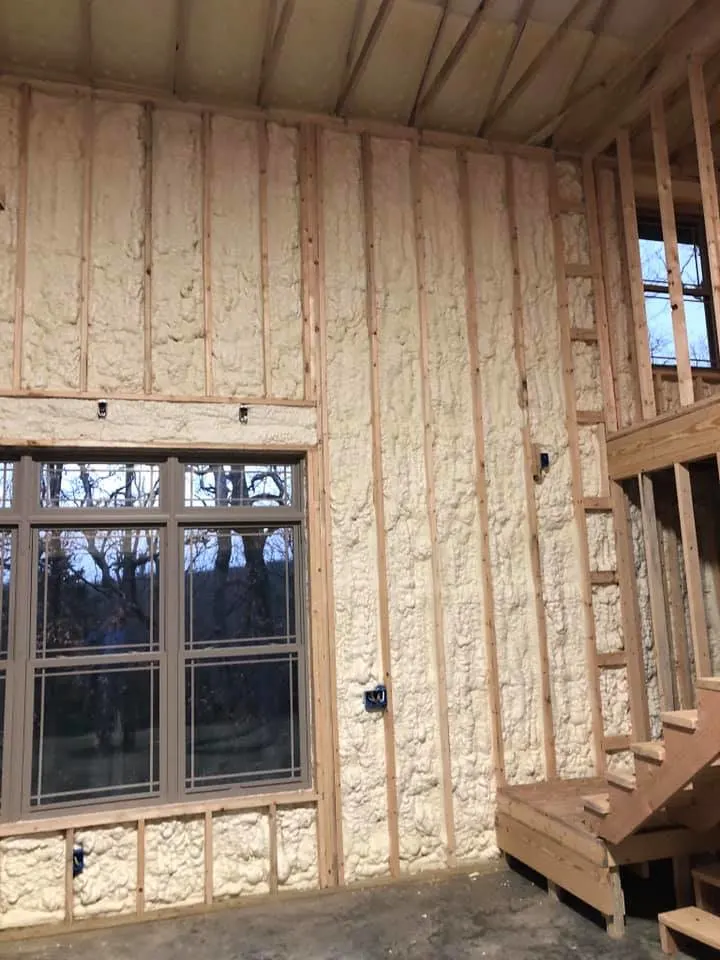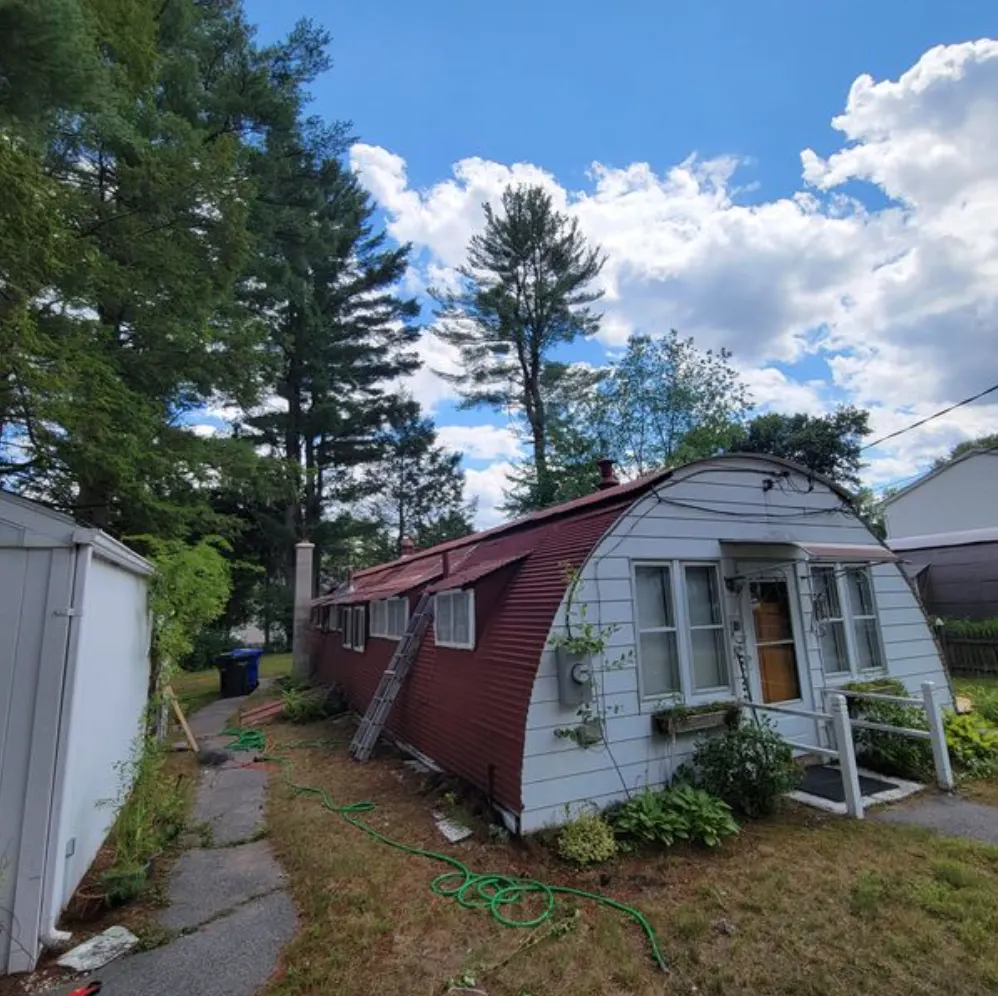Made from corrugated steel shaped over a sturdy steel frame, Quonset huts are quick and easy to assemble and extremely durable. But unfortunately, sheet metal isn’t a very good insulator. As a result, you’ll want to consider installing Quonset hut insulation, especially if you plan to use your hut as a living or workspace. In this post, we’ll explore the benefits of insulating your Quonset hut, as well as the different materials you can use for best results.
Page Contents
Benefits of installing Quonset hut insulation

Regulate the temperature inside
One of the main reasons to add Quonset hut insulation to your custom home is to ensure the temperature inside is comfortable all year round. Without it, your hut may be too cold in the winter, as the outside air cools, and the metal framework does too. Likewise, in the summer, without insulation, the steel will warm up and heat will pass through to your living space.
To avoid this, you need to install adequate insulation to stop air from transferring through the walls as easily. And remember, this works both ways, so if you try to warm your hut without insulating it first, the heat will escape. Insulation helps to retain it to keep energy costs down.
Prevent condensation and damp
By stabilizing the temperature of your Quonset hut, you also reduce the risk of condensation. This occurs when warm internal air meets a cold surface, like the steel panels that encase your hut during the colder months, creating moisture. Reducing this is important for several reasons, including keeping the contents of your home, workshop or storage unit dry.
Over time, condensation can also lead to rust which will require maintenance and even a build-up of mold that looks awful and can cause health problems. With that in mind, installing reliable Quonset hut insulation should be a top priority during your build.
Reduce noise pollution
With just a single layer of steel between you and the outdoors, noise pollution can be a real problem in Quonset hut homes and workspaces. Luckily, a layer of good quality Quonset hut insulation acts as a barrier to external noise. From limiting reverberation to drowning out passing traffic, insulation can make a huge difference to your comfort. Muffling the sound of heavy rain or hail hitting your home’s metal roof is bound to help you sleep better too.
Similarly, if you’re using your Quonset hut as a workshop or you like to play loud music late at night, insulation will help stop internal noise from escaping and aggravating your neighbors.
The different types of Quonset hut insulation

Fiberglass blanket insulation
Commonly used in traditional homes, noise-reducing fiberglass blanket insulation is popular in Quonset homes too. Available in rolls or pre-cut batts, fiberglass is flexible and can be manipulated to fit the contours of a curved Quonset roof. A waterproof vinyl layer also backs most types to prevent any moisture from entering your home through your insulation.
Just remember that before fitting blanket insulation, you’ll need to install wooden framing or metal furring to the walls and ceiling so that you have something to attach it to. You’ll also need to wear gloves, goggles, and a face mask to prevent irritation from the fiberglass fibers.
Spray foam insulation
Alternatively, you could try spray foam insulation. Made from a polymer like polyurethane, spray foam insulation is applied as a liquid using a pressurized applicator. It then dries hard to create a robust insulative barrier. One of the main advantages of this type of Quonset hut insulation is that it fills every nook to create an air-tight seal, which fiberglass simply can’t do.
However, it is more expensive and not as easy for beginners to use as it’s messy, and the chemicals involved mean you’ll need to don a respirator suit when applying it. As a result, it’s often easier to hire an expert to carry out the work, but this will of course, add to your costs.
Radiant bubble foil
Designed to block radiating UV heat, radiant bubble foil is perfect for insulating Quonset huts in warmer climates. The foil outer layer reflects heat to stop it from penetrating through your roof and into your home to keep the interior as cool as possible. The plastic material is flexible and easy to fit with glue or staples, and some brands offer eco-friendly recycled versions too.
Radiant insulation will also reflect heat back into your property to prevent it from escaping, while the inner layer of bubble wrap adds a thermal layer for extra warmth in winter. However, it isn’t as effective as the other two forms of Quonset hut insulation in cold climates.
Which type of insulation is best for Quonset huts?

Each of the insulation types we’ve covered above has pros and cons depending on what you’re looking for. If you want to maximize warmth, spray foam or blanket insulation are great options. But if you live in a warm state and want to keep the summer heat out of your home, then we’d advise choosing reflective radiant insulation. You should also look into adding a protective coating to the exterior of your home to help keep the steel cool.
Whichever kind of Quonset hut insulation you choose, look for one with a high R-value. This is used to rate how well the product can block heat transfer and withstand condensation (its permeability), so it will help you determine its suitability for your property.
The only exception to this rule is rigid board insulation. Although a highly effective form of barndominium insulation, it is hard to fit in semi-circular Quonset huts, so it is best avoided.
Conclusion
We hope you found this post helpful! If you’re looking for more tips on building a custom home, why not join our Barndominiums Made Easy program? From developing a floor plan to sourcing building materials and suitable insulation, our experts will provide all the advice you need for a successful build.
If you would like more guides like this one, check out the rest of BarndominiumLife.com. There, you will find more helpful tips and tricks from the pros. You will also find featured barndominiums, barndominium floor plans, and information on financing and insurance. Knowing as much as you can will help you get the best results for your dream home.
Rachel Dawson is an accomplished writer with a passion for all things barndominiums. With over a decade of experience in the industry, Rachel has established herself as one of the leading authorities on the subject of barndominium design and lifestyle.
Her work has been featured in numerous publications, including Barndominium Life, where she regularly contributes articles on a wide range of topics, from design trends and tips to the unique challenges and rewards of living in a barndominium. Rachel’s ability to write with both authority and accessibility has earned her a loyal following among readers and enthusiasts alike.
Her commitment to excellence and her unwavering dedication to the barndominium lifestyle make her a true asset to the Barndominium Life community.
